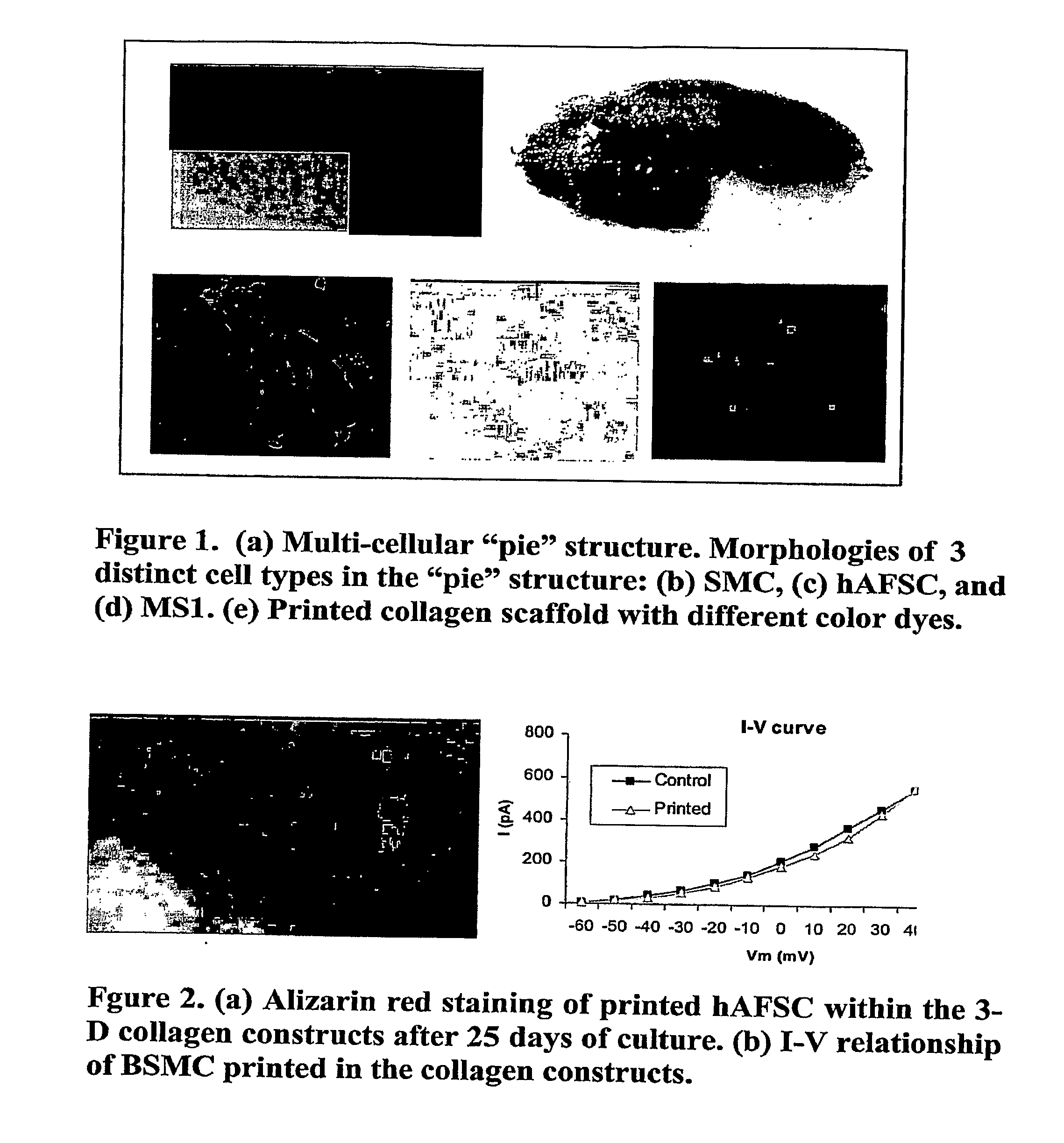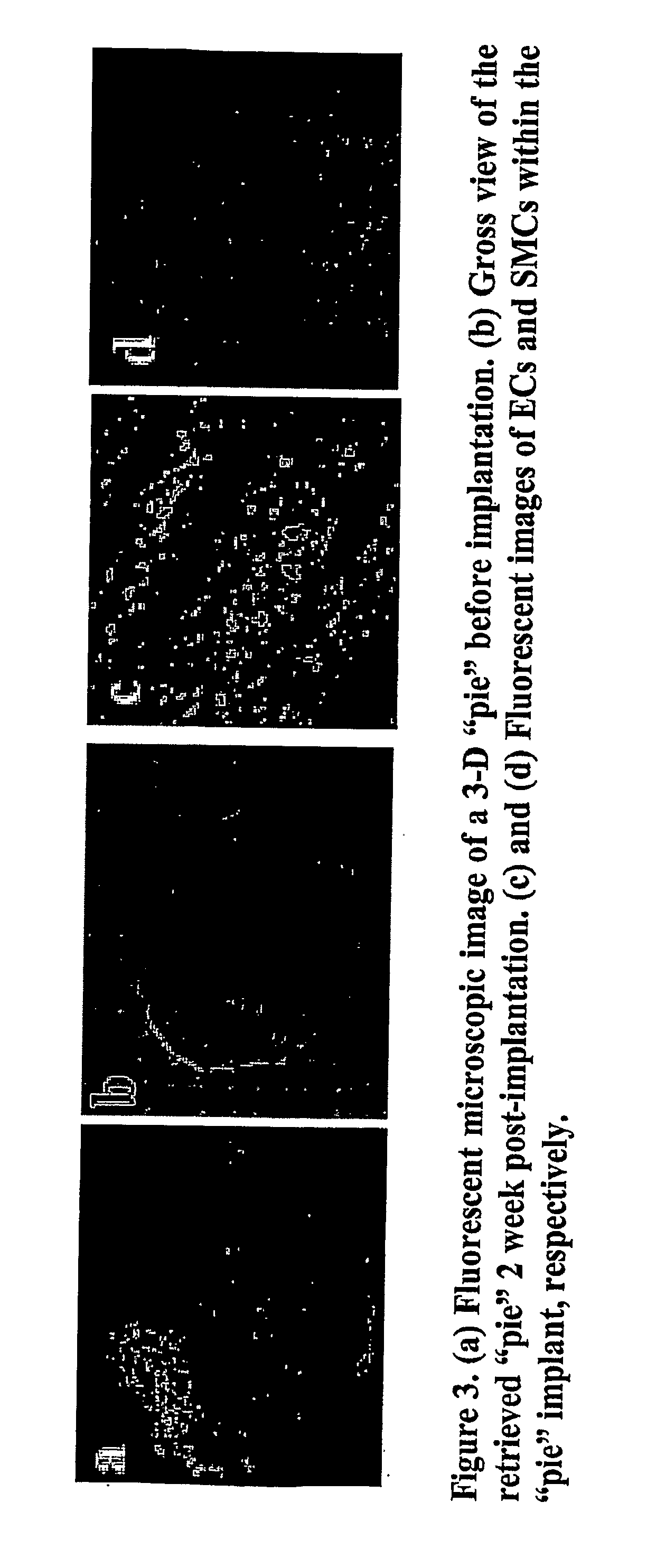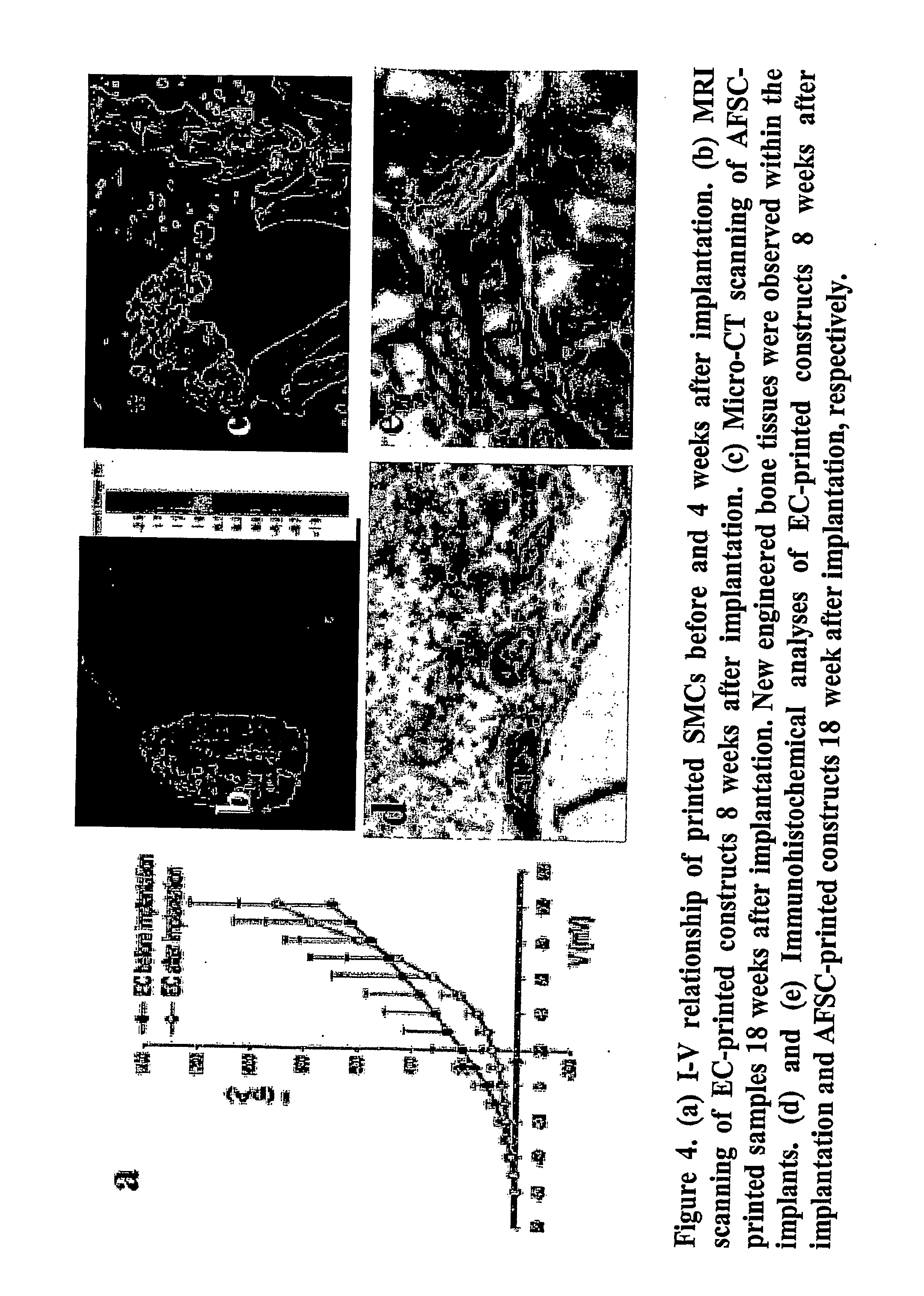Ink-jet printing of tissues
a tissue and inkjet printing technology, applied in the field of inkjet printing, can solve the problem that the possibility of simultaneously printing multiple cell types to build viable heterogeneous cellular constructs has not been demonstrated to da
- Summary
- Abstract
- Description
- Claims
- Application Information
AI Technical Summary
Benefits of technology
Problems solved by technology
Method used
Image
Examples
example 1
Printing of Multiple Cell Types
[0081]Materials and Methods. Three distinct cell types were used in this study: human amniotic fluid-derived stem cells (hAFSC) transfected with lacZ, bladder smooth muscle cells (BSMC), and GFP labeled MS1 (mouse pancreatic islet endothelial cell line). Each cell type was grown separately, trypsinized, collected and resuspended in Type I collagen solution. Different mixtures of collagen and cells were loaded into different ink cartridges. Each cell-collagen mixture was printed layer-by-layer into the pre-designed target locations using a modified HP 550 printer. A solution containing NaOH was subsequently printed in order to neutralize the pH. The printed constructs were placed in the incubator for 3-5 hours. Once the collagen gel was set, 3-D viable multi-cellular constructs with a specific shape were formed. After 2 days of culture, the printed multi-cellular constructs were fixed and characterized using cell specific markers (α-actin, X-gal).
[0082]...
example 2
In vivo Generation of Tissues with Ink-Jet Printing
[0086]In this example we investigated whether the printed multi-cell derived tissue constructs could maintain their structural and spatial orientation in vivo. We examined whether these tissues are able to survive and mature into functional tissues when implanted in vivo.
[0087]Materials and Methods: Three-dimensional multi-cell constructs with a “pie” configuration were fabricated by simultaneously printing 3 different cell types [canine bladder smooth muscle cells (SMC), bovine aortal endothelial cells (EC), and human amniotic fluid-derived stem cells (AFSC)] into collagen / alginate gel. The cells were labeled with 3 different membrane bound tracers, which include [PKH67 (red), PKH26 (green), and CMHC (blue)], respectively, prior to printing. Individual cells were also printed separately for additional testing. The printed 3D constructs were subcutaneously implanted into athymic mice. AFSC-printed constructs were cultured in osteoge...
PUM
| Property | Measurement | Unit |
|---|---|---|
| viscosities | aaaaa | aaaaa |
| viscosities | aaaaa | aaaaa |
| viscosities | aaaaa | aaaaa |
Abstract
Description
Claims
Application Information
 Login to View More
Login to View More - R&D
- Intellectual Property
- Life Sciences
- Materials
- Tech Scout
- Unparalleled Data Quality
- Higher Quality Content
- 60% Fewer Hallucinations
Browse by: Latest US Patents, China's latest patents, Technical Efficacy Thesaurus, Application Domain, Technology Topic, Popular Technical Reports.
© 2025 PatSnap. All rights reserved.Legal|Privacy policy|Modern Slavery Act Transparency Statement|Sitemap|About US| Contact US: help@patsnap.com



